

The 11 Best Cities to Visit in Italy, Ranked for 2024
Written by: Author Debra Carpenter | Reviewed by: Editorial Team

Debra Carpenter is a Nashville-based editor and content creator. Having written for respected publications like Forbes and HuffPost, she’s committed to bringing her passion for writing about travel to the masses... Learn More

The Editorial Team is comprised of several freelance travel enthusiasts that share a love of visiting new places. Using both personal experience and third-party research, the team brings a unique perspective to their writing that might even feel like your travel agent is talking to you themselves... Learn More
Posted on Last updated: December 11, 2023 - Travellers Worldwide is reader-supported. If you buy a product we link to, we may earn a commission. Learn more
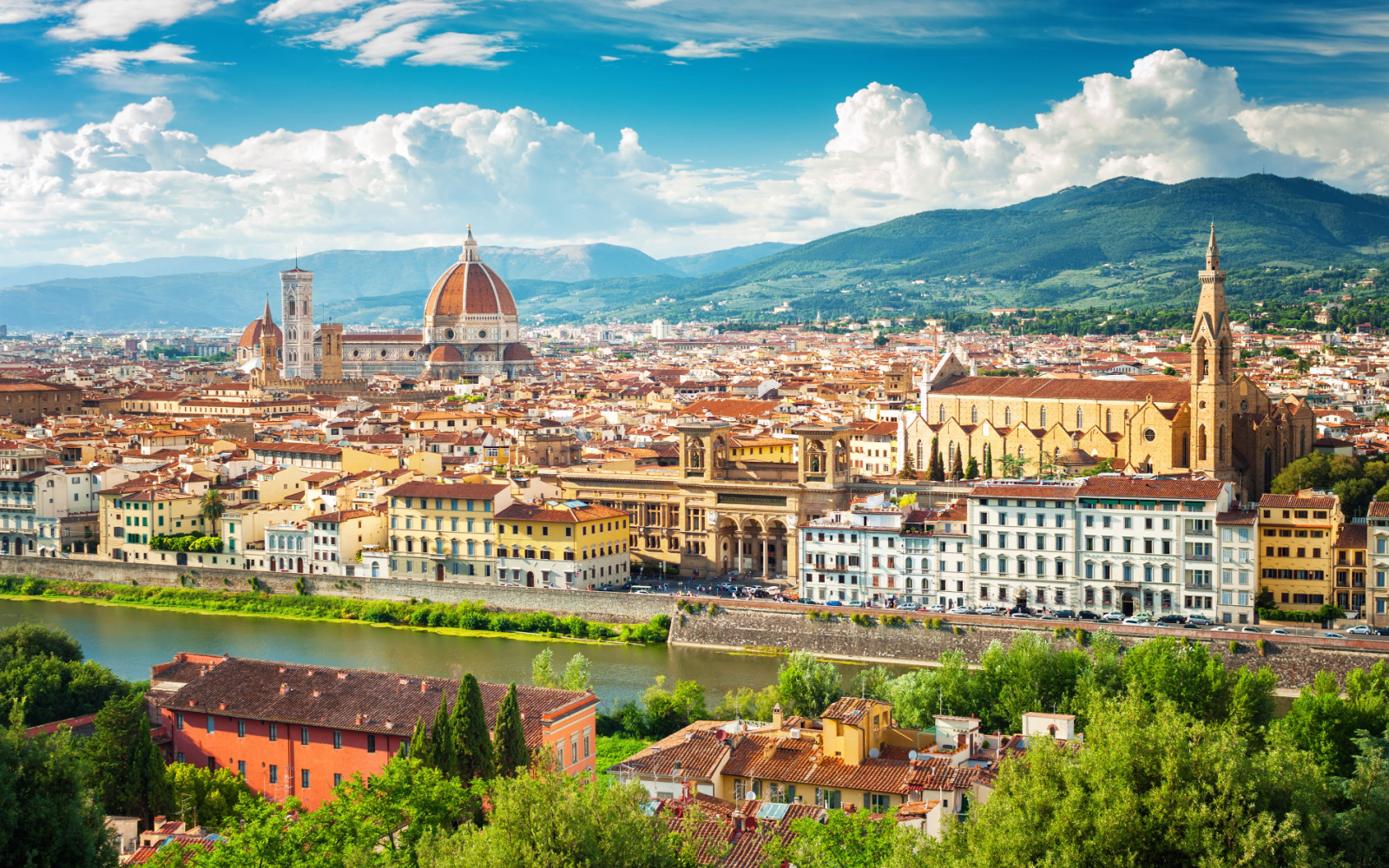
There are some truly unforgettable cities in Italia , including world-famous tourist hotspots and lesser-known hidden gems. See the 11 best cities to visit in Italy — on and off the beaten path — with sightseeing options for each in this informative guide!
The 11 Best Cities to Visit in Italy
Mountains and coastal scenery, art galleries and museums galore, historic architecture and canals, and sumptuous cuisine that is renowned worldwide make Italy a fascinating place to visit.
But there are a few cities and towns that are especially deserving of a closer look when you travel to Italy — 11, to be exact. We’ve discovered the best cities to visit in Italy, each one offering something truly special that makes a visit worthwhile.
In a land of extravagance, grit, and scenic beauty, these are the best cities to add to your itinerary:
- Cinque Terre
We’ll take a closer look at each of the best cities to visit in Italy below with sightseeing and day trip recommendations for each.
1. Florence
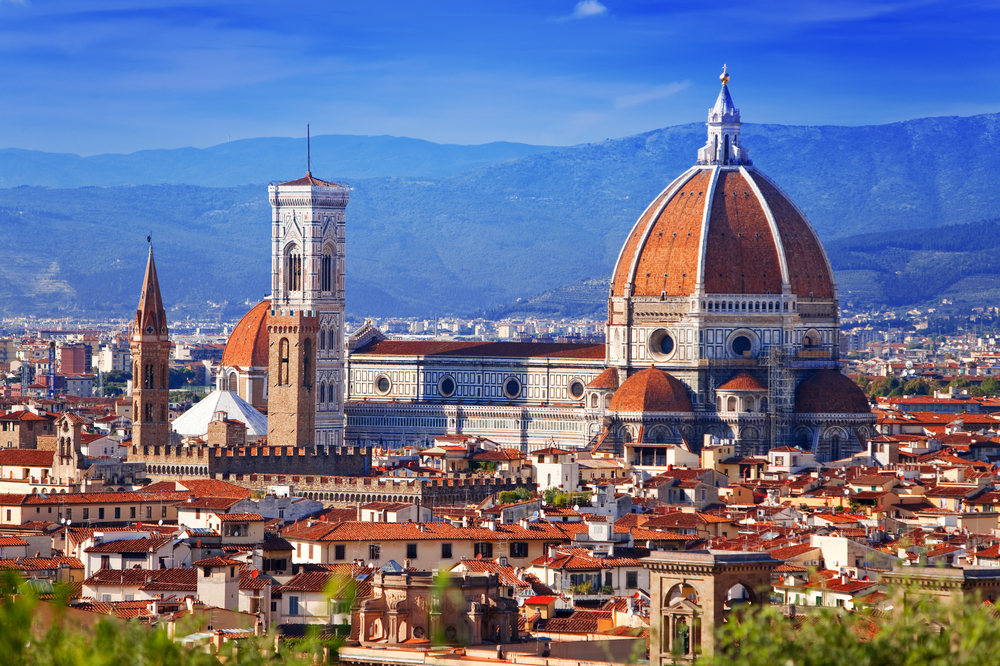
KKulikov/Shutterstock
As the capital of the beautiful Tuscany region, Florence sits in the heart of the rolling hills with the Apennine Mountains surrounding it. This is a cultural city known for its Renaissance artwork and architecture housed in famous galleries and museums.
You can’t visit Italy without coming to Florence — it’s that ubiquitous and worth a visit. The food is amazing (Florentine Beefsteak and Schiacciata sourdough are essentials) with a glass of Tuscan red wine like Chianti.
This is a city you absorb through tours and strolling the streets. Tour the Uffizi Gallery with works by Leonardo da Vinci and Botticelli; head to the Galleria dell’Accademia to see Michelangelo’s David; marvel at the Florence Cathedral and its recognizable terracotta dome in the Piazza del Duomo.
For a real treat, make your way to the ornate Basilica di San Miniato at one of the city’s highest points for incredible views over the city, frescoes, and an ancient crypt.
Read Next: Is Florence Safe to Visit in 2024? & Best & Worst Times to Visit Florence
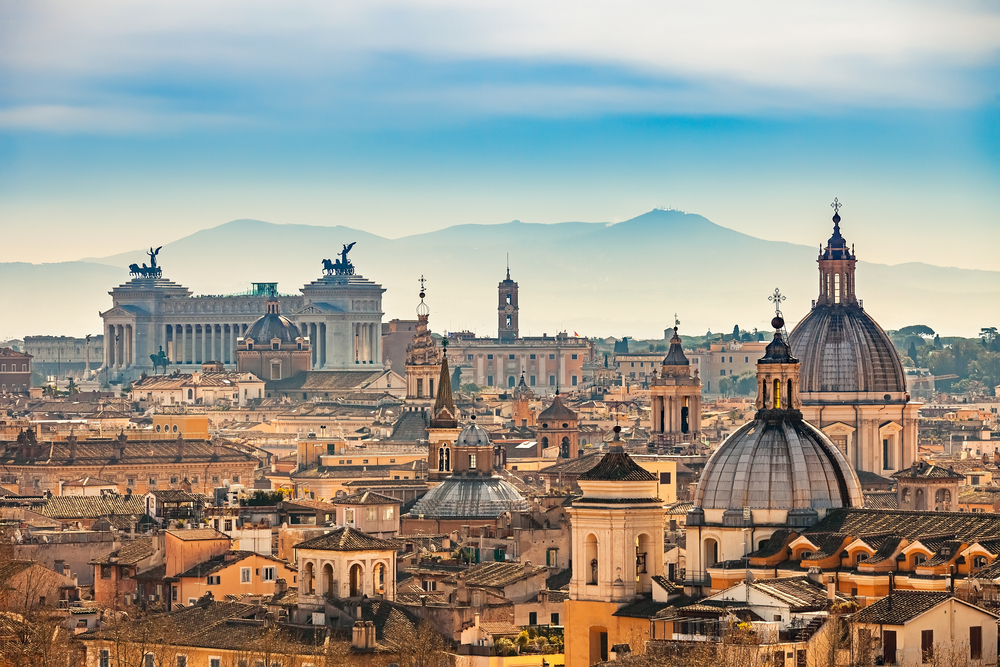
S.Borisov/Shutterstock
Never forgotten on lists of the best places to visit in Italy, Rome is the quintessential Italian city and home to some of the most famed landmarks, architecture, ruins, and artwork in the country.
Rome is filled with tourists and tends to be crowded, especially during the summer peak season. But to see the Colosseum, Roman Forum ruins, the Sistine Chapel, Trevi Fountain, and Vatican City with St. Peter’s Basilica, it’s well worth fighting the crowds.
Visiting the Pantheon temple ruins is impactful, while wandering through Roman piazzas (squares) and trendy neighborhoods feels distinctly Italian. You’ll see historic architecture at every turn and walk the Spanish Steps built in the 1700s.
Guided tours are the best way to experience Rome in all its splendid history and wonder. Duck into small cafes or dine al fresco at restaurants serving up pasta alla carbonara or grab pizza al taglio — pizza by the slice.
Read Next: What the Average Trip to Rome Costs & Is Rome Safe to Visit?
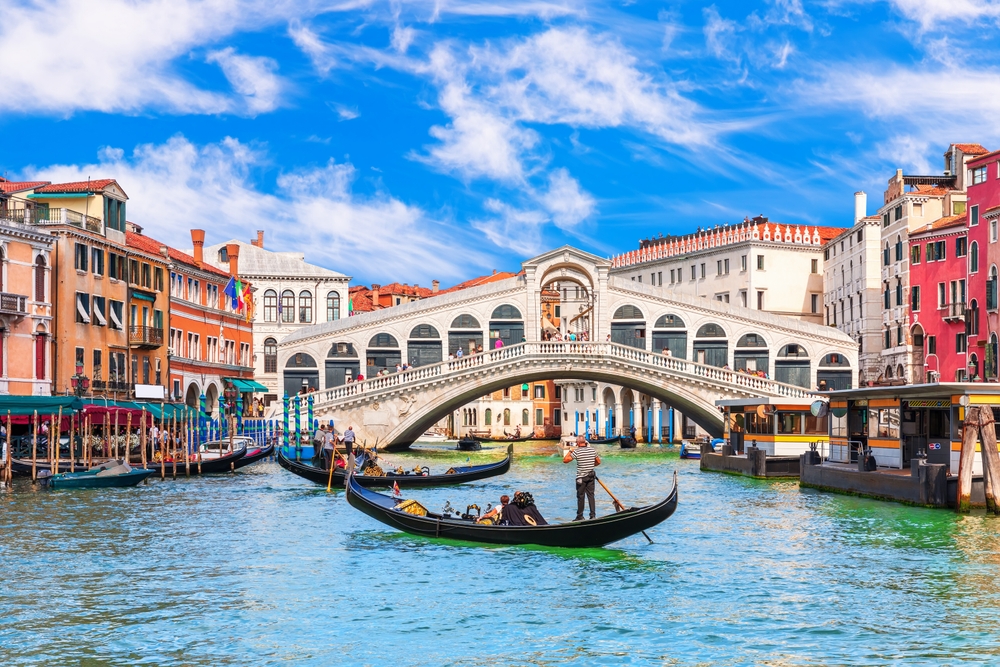
AlexAnton/Shutterstock
You won’t find a more unique and distinct city in Italy than Venice. Consisting over 100+ “islands” interconnected by a network of canals, this largely aquatic city feels ethereal with its endless red roofs, stunning architecture, and gorgeous views.
You’ll take vaporettos (water buses), romantic gondolas, or open-air water taxis to traverse your way through Venice, crossing under countless, intricately-designed bridges like the Rialto Bridge over the Grand Canal.
All around you looms historic architecture in Venetian Gothic and Renaissance styles, like St. Mark’s Basilica in Piazza San Marco (the central square and hub of Venice) and Doge’s Palace from the 14th century.
Venice feels crowded during the early summer and fall seasons, but things calm down after 3:00pm each day as tourists clear out when cruise ships leave the port. This is the perfect time of day to come out, explore the city, and get lost in the canals of Venice.
Read Next: Where to Stay in Venice in 2024
4. Cinque Terre
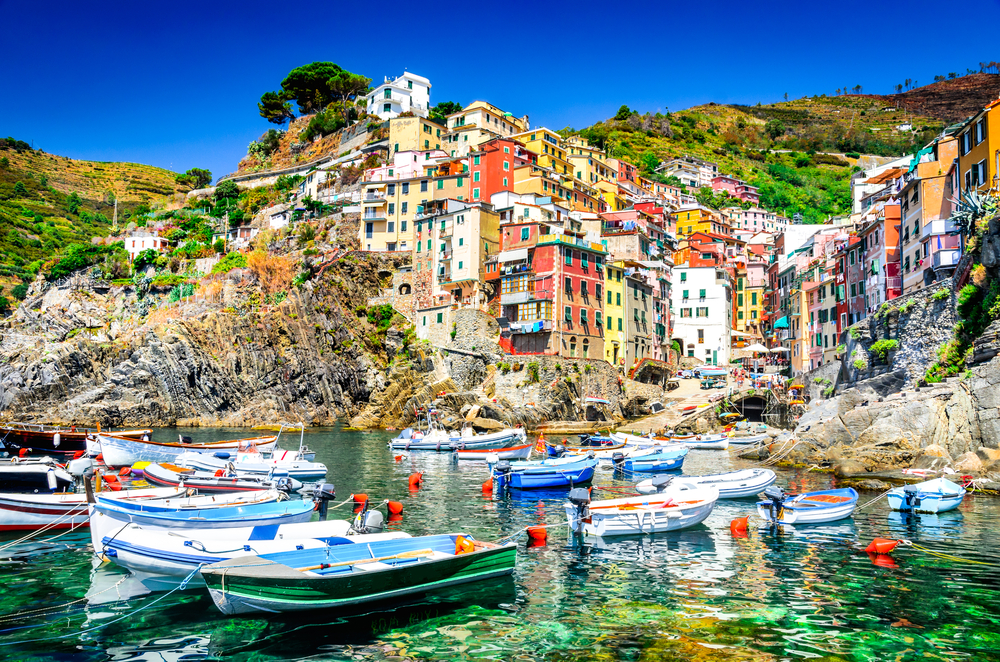
ecstk22/Shutterstock
While not a single city, Cinque Terre is a group of 5 picturesque coastal villages on the Italian Riviera that transport you in time with colorful houses on the cliffs, bustling harbors and beaches, and winding cobblestone streets and alleyways.
The 5 villages (Riomaggiore, Manarola, Corniglia, Vernazza and Monterosso al Mare) are closely grouped and easily traveled between by hiking trails (highly recommended!), trains, and boats. Each one offers something different.
Monterosso is the largest and makes a great “home base” with its own sandy beach. Vernazza, with its colorful houses, has a medieval castle and terraced olive groves to stroll through. The only non-seaside village, Corniglia, teems with vineyards and is enclosed with old stone walls.
Take time to appreciate the oldest village, Manarola, and dine on seafood and rustic pizza with views of vineyards and rainbow-hued homes. Riomaggiore, the nightlife hub, is home to the 12th-century Castello di Riomaggiore and excellent diving just offshore.
Read Next: Best Time to Visit Cinque Terre in 2024

Valery Bareta/Shutterstock
Like Florence, Lucca is part of the scenic Tuscany region but offers a completely different, less tourist-packed perspective. This riverside city is enclosed with Renaissance-era walls.
Locals and tourists love to bike or stroll the 3-mile loop on top of the low walls! Cobblestone streets lined by shade trees add an old-world elegance to Lucca, but the real stunning sights are the architectural wonders.
Visit the Cathedral of Lucca, climb 223 steps to the top of Guinigi Tower for incredible views over the river, and wander the 1st-century Piazza dell’Anfiteatro public square, once an amphitheater and gladiator battleground.
Don’t miss touring the Casa di Puccini , the home of famous opera composer Giacomo Puccini that’s now a museum. Book a Puccini concert at the Church of Saint John in Piazza San Giovanni (they happen nightly).
San Frediano Basilica is a stunning sight to see and houses the mummified remains of Saint Zita. The Palazzo Pfanner museum is the perfect spot to spend a few hours taking in art and history in this delightful, slower-paced city.
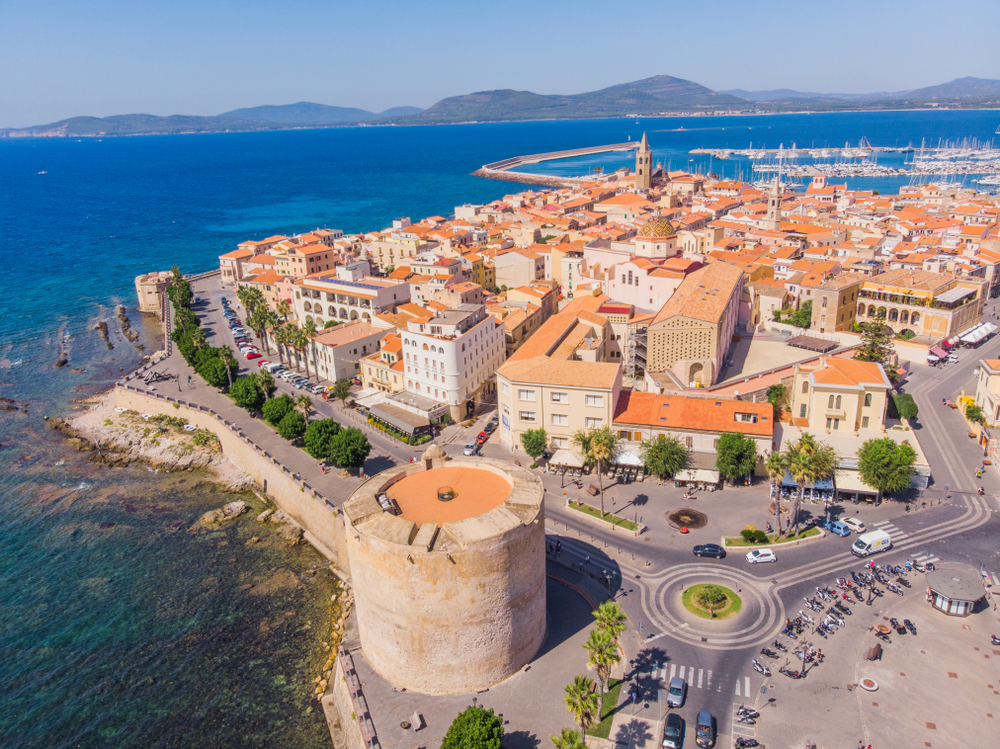
Iurii Dzivinskyi/Shutterstock
On the island of Sardinia surrounded by the Mediterranean Sea, the walled city of Alghero sits on the northwest coast. Featuring highlights like Catalan Gothic architecture and cobblestone streets, this coastal beauty is a must-see.
The beaches are especially nice on this part of the island, offering soft, white sand and rows of shady trees by the shore.
The city’s historic center makes for a full day or two of exploring. You’ll be able to check out the Cathedral of Santa Maria, which is stunning in its Gothic style and bell tower you can climb for the city’s most impressive views over the rooftops and sea.
Come to marvel at a palace built in the 1500s, Palazzo Guillot, see a church built in the 14th century (Chiesa di San Francesco), and head to Chiesa San Michele at the base of Monte Timidone to see its amazingly colorful tiled dome and exquisite chapels.
This is a city that loves gelato, and once you’ve tasted some from a street stall, you will, too. The seafood and wine is incredible here and you’ve got to try the local Alghero Liquoroso (fortified red wine).
7. Lake Como
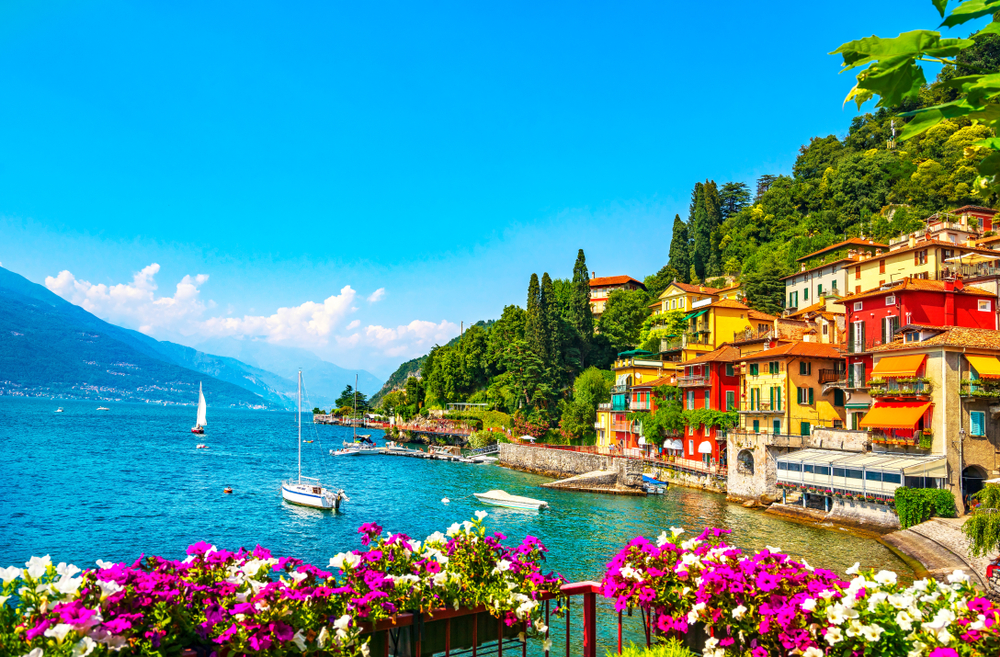
StevanZZ/Shutterstock
A favorite recreation destination for Italians, Lake Como is a truly scenic and naturally beautiful town on its namesake lake at the base of the Alps. Romantic, charming, and full of activities and nightlife, Lake Como bids you to come see what it’s all about.
Lake Como is Italy’s deepest lake and has been a gathering place and recreation hub for centuries. There are some truly impressive historic villas (now museums) located around the lake that can be toured to learn about the area’s history and art.
Villa del Balbianello, Villa Carlotta, and I Giardini di Villa Melzi are some of the most rewarding to visit, surrounded by lake views and foliage. The Cathedral of Como is one of the last Gothic churches built in Italy and Basilica di Sant’Abbondio is impressive in Romanesque style.
Head down to Menaggio, a cute harbor with old fishing boats, water sport rentals and tours, and unique colorful buildings, to hear the church bells ring and book lake adventures for the day.
Read Next: Best Time to Visit Lake Como in 2024 & Where to Stay in Lake Como
8. Positano
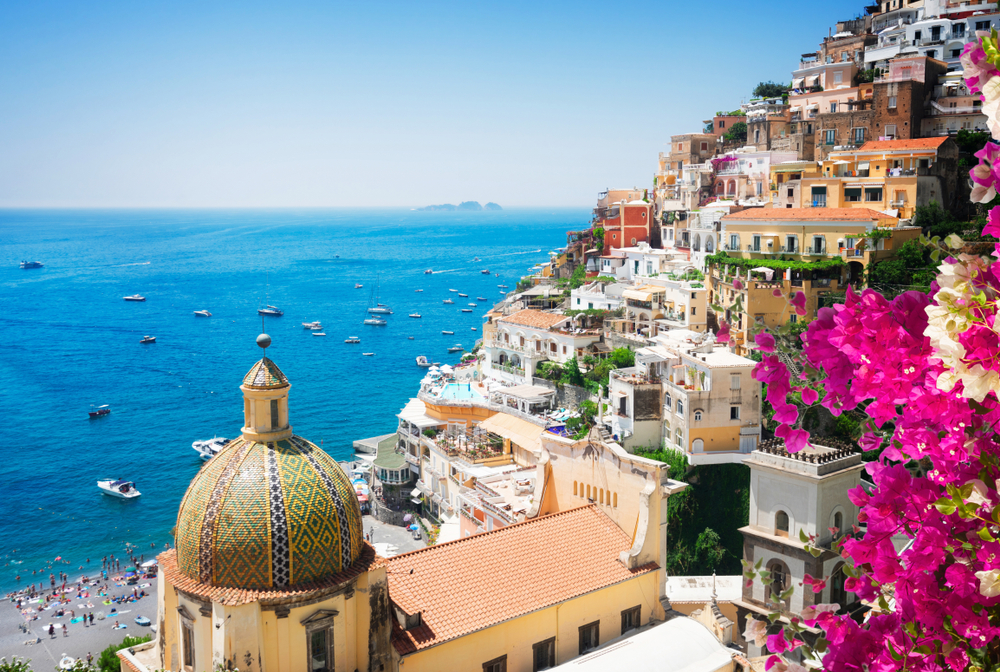
Neirfy/Shutterstock
Positano is one of the crowning jewels of the Amalfi Coast, a luxe coastal destination for Italian tourists who want to experience the country’s beaches, rocky cliffs, and Italian culture at a dreamy, relaxed pace.
Positano boasts some of the Amalfi Coast’s best views and great adventure opportunities, too. Take the challenging but gorgeous Path of the Gods hiking trail. It leads into Nocelle and the small mountain village of Bomerano after a steep ascent and over 1,800 steps.
You can take a cooking class with a seasoned (see what we did there?) Italian chef or hop on a boat to cruise along the Amalfi Coast and check out other towns like Capri, Ravello, and Sorrento for fun-infused day trips.
While the beaches of Positano are pebbled and can be crowded in the peak summer season, there are several that feature secluded coves where you can watch boats pass and lounge in the sun.
Read Next: Best & Worst Times to Visit Positano & Is Positano Safe to Visit?

Alessandro Tortora/Shutterstock
Naples is one of Europe’s oldest and reigns as southern Italy’s largest city. With amazing cathedrals built in the 13th century, a historic center that is honored as a UNESCO World Heritage site, and to-die-for food, Naples is all it’s cracked up to be and more.
People tend to love or hate Naples because it’s such a vibrant mix of old and new, luxe and gritty, and crowded streets contrasting with secluded neighborhoods. Chances are, you’ll love it here.
You haven’t tasted pizza until you’ve had a pie in Naples, where wood-fired pizza ovens crank out fresh, Italian pies that are unmatched in flavor and authenticity. The Bay of Naples is the best place to watch a sunset with a hot slice!
In the historic town center, you’ll be able to see Baroque, Gothic revival, and Neapolitan buildings from the Palazzo Reale palace to ancient churches with 4th-century foundations like the Naples Cathedral .
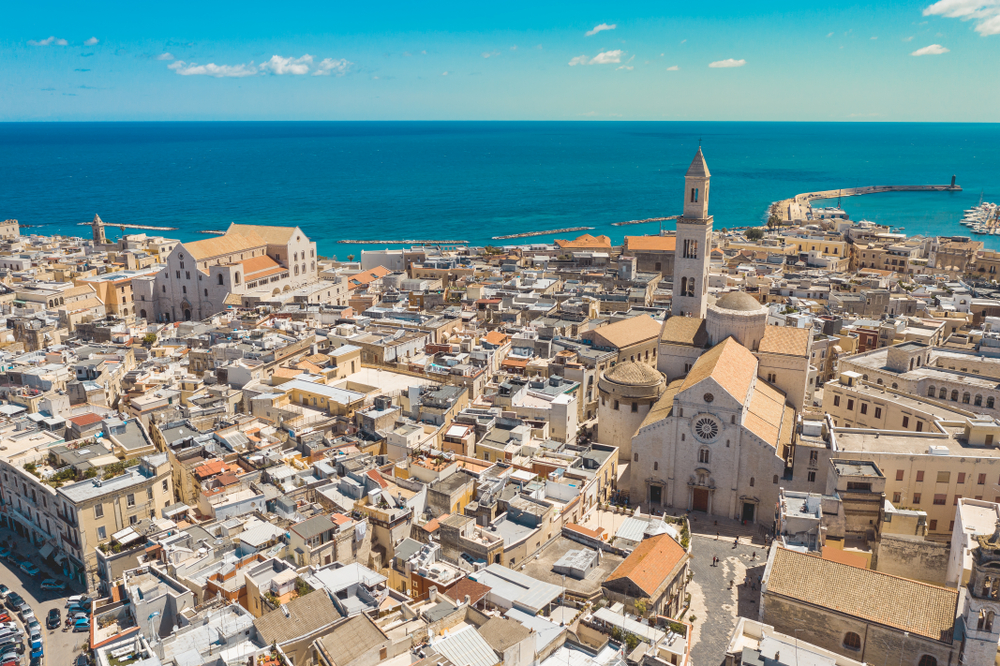
Fabio Dell/Shutterstock
In the heart of Italy’s Puglia region on the Adriatic Sea, Bari and its old town, Barivecchia, make up one of the best cities to visit in Italy. The character of this seaside port city is palpable and takes you deep into the “heel” of southern Italy.
Bari has some of the best beaches in Italy and none of the crowds you’ll see at more popular coastal towns, making it truly ideal for a laid-back visit. Take a free walking tour to get to know the lay of the town and learn about its history.
The old town is laid out like a labyrinth with narrow streets that wind past churches and cathedrals of centuries past, like the Basilica di San Nicola (11th century) that actually holds the saint’s remains within.
Head down into the Underground Caves at Castellana Grotte to explore the subterranean side of Bari almost 200 feet below ground. Taste authentic southern Italian food, like sgagliozza (fried polenta) and spaghetti all’assassina (Assassin’s spaghetti, a spicy pasta dish).
11. Sabaudia
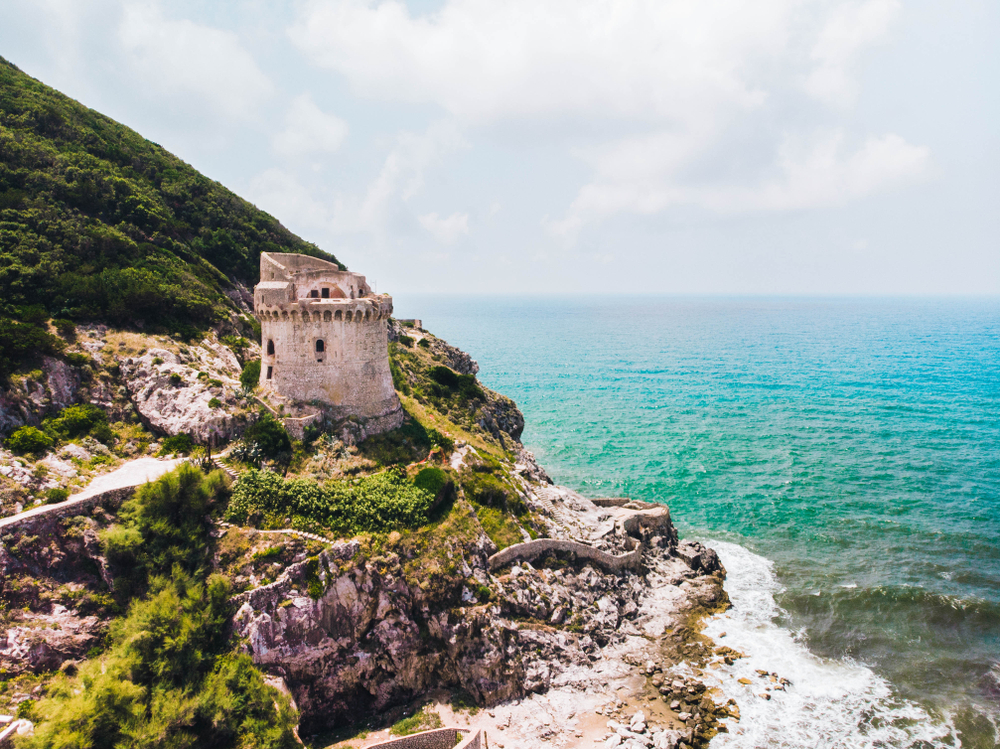
Stock Holm/Shutterstock
Located in the Lazio region of Italy by the sea, Sabaudia sits among sand dunes and lush greenery that lends it the nickname of “city-garden.” This city is a hidden gem that locals love, but tourists haven’t quite caught onto yet.
It’s a quick journey here from Rome, and if you love spending time on and by the water, it’s a prime place to be. Scuba diving, snorkeling, swimming, and sandy shores make it a true Italian paradise on sunny days.
The architecture here is interesting and different from the rest of the country. You’ll see Fascist and rationalist architecture examples that are angular, imposing, and contrast interestingly with the lush surrounding seascapes and beaches.
The central hub is Piazza del Comune, which is a great starting point to explore the city’s design and buildings. Tall towers, palaces, and historic mansions and villas add to the cool juxtaposition of coastal escape/historic town.

Things to Consider
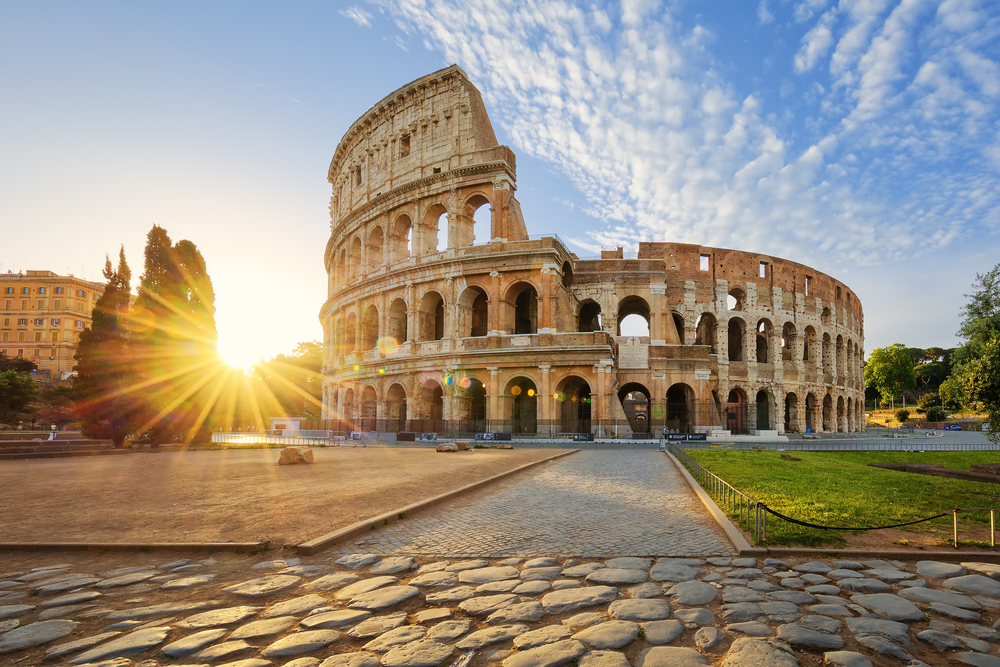
prochasson frederic/Shutterstock
Even if you’re heading to one of the best cities to visit in Italy, you’re not guaranteed a great time if you don’t do your homework! Here are some tips to keep in mind that will help you plan the perfect Italian experience.
- Carry cash in small towns. Some of Italy’s best cities and towns are off the beaten path, smaller than the most popular tourist destinations without a card reader in sight. Bring plenty of cash (exchange your currency for euros upon arrival) when you travel to these places since debit and credit cards aren’t commonly accepted in smaller Italian towns.
- Find sample itineraries online. You’ll most likely be splitting your time in Italy between multiple cities and regions, taking advantage of the many “flavors” this country has to offer. For the best experience, find itineraries for the places you want to visit online and modify them to suit your travel needs so you have a working plan to move around the country in an efficient way.
- Always go for a guide. To get the most out of Italy’s museums, galleries, and historic areas, you’ll want a knowledgable tour guide to point out the important things and explain the history behind the landmarks, artwork, and architecture you’re seeing.
- Learn some Italian. You don’t need to be a fluent speaker to have a great time in Italy, but if you’ll be venturing outside of the main tourist cities (like Rome and Florence), you’ll find that many locals speak limited English and communication gets harder. Learning some Italian phrases and words (greetings, emergency phrases, and menu words are nice to know) can help bridge the gap and immerse you further in Italy’s culture.
- Check your electronics. Italy uses three types of outlets: C (2 small pins), F (2 large pins), and L (3 small pins). You’ll need an adapter to plug in your electronics here. Italy outlets run 220V-230V at 50mHz, so check the adapter on your electronics to make sure they’ll be compatible to bring.
Frequently Asked Questions
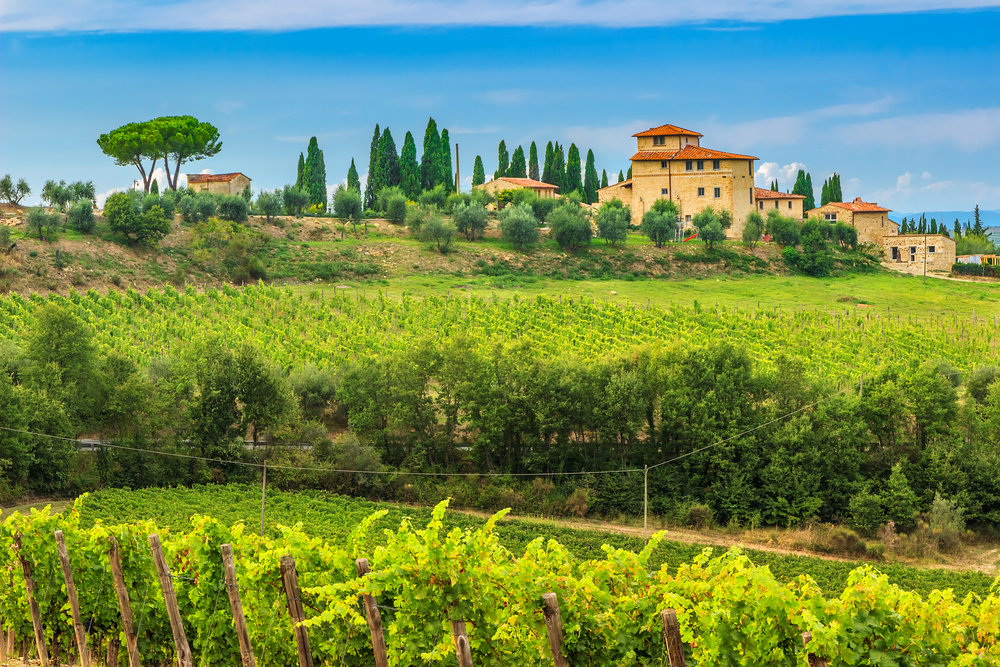
Gaspar Janos/Shutterstock
With a list of the best cities to visit in Italy, you’re one step closer to planning the trip of a lifetime in one of the most romantic, scenic, and historic places on Earth. Check out some of the most frequently asked questions from fellow travelers to learn more!
Which cities to visit in Italy for the first time?
The best cities to visit in Italy for first-timers are the main highlights: Rome, Florence, and Venice. These cities boast lots of attractions, good public transportation, and abundant hotels and restaurants for an excellent first trip to Italy.
We recommend flying into Rome to spend 4 days, then taking a high-speed train to Florence (stay 2-3 days) before boarding another train to Venice (stay 2-3 days) for your first time in Italy.
What is the best city to stay in Italy?
Rome is widely recognized as one of the best cities to stay in while you’re visiting Italy. It’s a big city with lots of neighborhoods and districts, but Trastevere is one of the best for travelers seeking a convenient spot within walking distance of the Vatican and great restaurants.
Florence is another great city to stay in on a trip to Italy. It’s a city with tons of art and culture, and if you can find availability, a B&B in the Centro Storico (Historic City Center) is ideal for proximity to attractions you’ll be visiting.
What are the top 3 major cities in Italy?
The top 3 cities in Italy for visitors are Rome, Florence, and Venice. Each of these cities offers delicious, regional takes on Italian cuisine, excellent views of mountains, architecture, or the Mediterranean Sea, and abundant museums and galleries with famous landmarks for sightseeing.
If you can swing it, try to visit all 3 major cities in Italy during your trip. If you don’t have enough time for all 3, Florence and Rome are must-see cities on your first trip.
How do I decide where to go in Italy?
If it’s your first time going to Italy, you should go with the most popular tourist cities in Italy (Rome, Florence, and Venice). These offer the most distinct Italian feel with history, architecture, and culture, but Italy has a lot more to offer beyond these places, too.
The Amalfi Coast (including Positano), Italian Riviera (especially Cinque Terre), Adriatic Coast, and island of Sardinia are all great places to go in Italy if you’re looking for beaches and coastal scenery.
For countryside, great Italian food, and glimpses of classic Italy, the broader Tuscany region and southern Italy can be great areas to visit.
Is it easy to travel between cities in Italy?
Traveling between cities in Italy is easy because many cities are connected by rail with high-speed trains for fast, convenient travel. Train stations can be confusing for first-timers, so download a train station map and determine the routes you'll need to take beforehand.
Moving up and down Italy’s coasts by boat is a fun, relaxed way to get around coastal cities without dealing with traffic or train stations. Coastal cruises around Italy are more expensive than taking trains, so consider your budget when deciding how you'll get around.
So, What Are the Best Cities to Visit in Italy?
The best cities to visit in Italy include some of the most famous cities popular with tourists, like Florence, Rome, and Venice, as well as coastal destinations like Cinque Terre, Alghero, Bari, and Positano.
Hidden gems and lesser-visited places like Lucca and Sabaudia can be the highlight of your trip, while stopping in cities like Naples and Lake Como can add a special significance to your trip with amazing scenery and delectable food and wine.
Italy’s most fascinating cities are as varied as the types of pasta ( 350 and counting , in case you wondered) you’ll find in this beautiful country and each one offers something a little different for curious travelers.
Which Italian cities will make it on your itinerary? Start practicing those Italian phrases and get ready for buon viaggio — happy travels!
When to Go: Is Italy Safe to Visit in 2024? | Safety Concerns The Best & Worst Times to Visit Italy (Updated for 2024) What to Do: The 20 Best Places to Visit in Italy (Our Picks for 2024) What It Costs: What a Trip to Italy Costs in 2024 | Average Prices

COMMENTS
Travellers planning on taking a trip to the …
Paring Italy down to 12 cities isn’t easy. There are hundreds, and each is as distinctive as it is enthralling, embodying its singular sense of place through its territory, history, architecture, culture, surroundings, cuisine and wine.
From the art filled streets of Florence to the romantic canals of Venice, every Italian city has unparalleled charm waiting to be discovered. Enjoy a relaxing holiday, discover some of the most incredible history in the world, and taste …